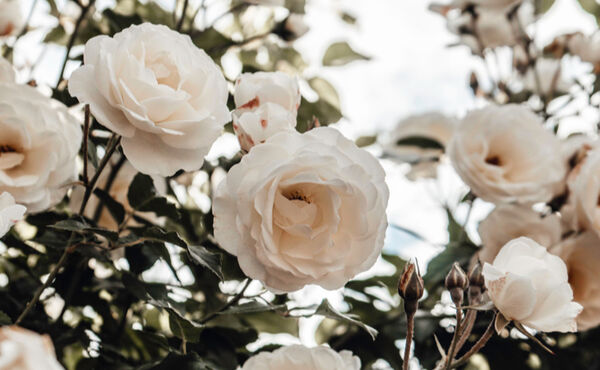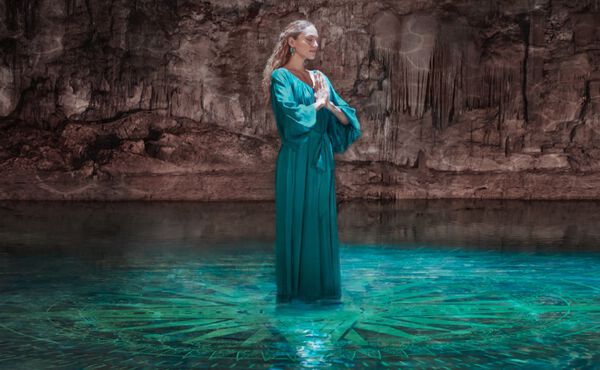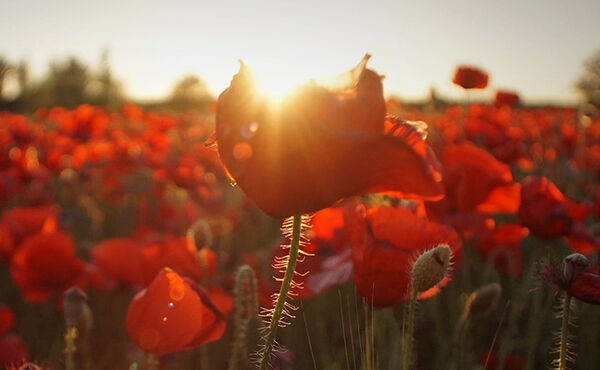With love as the central point of our Art of Soulful Living compass, here’s all the ways you can show your love through flowers
It’s common knowledge that flowers have meanings – red roses are a must-buy for lovers on Valentine’s Day, daisies are a sure sign of innocence, and no Christmas celebration would be complete without festive red poinsettias. It’s a lesser-known fact that in the 19th century the Japanese took this symbolism and elevated it to the highest point, developing the art of hanakotoba, the secret language of flowers. Read on to learn more, and to find out how you can incorporate it into your own life.
Sometimes, love is strongest when it’s unspoken – conveyed through grand gestures or subtle acts of appreciation. The Japanese are masters in navigating these coded communications, which found their greatest form of expression in the ancient art of hanakotoba.
Using cues such as colour, height and general appearance, this language could be used to convey messages as wide-ranging as purity, deep passion or hatred. A person might make a declaration by sending a bouquet of gardenias (secret love), plum blossoms (elegance and loyalty) and yellow camellias (longing). They’d pray for a response of white poppies (rejoicing) or red roses (in love) but fear that the outcome could be a tulip (one-sided love) or an orange lily (hatred).
Hanakotoba has its roots in the Buddhist ideal of paying attention to the smallest of things. The flowers’ fragility and evanescence meant that a bouquet’s meaning might be fleeting, but that it should be cherished all the more for its ephemerality. Combined with the traditional practice of ikebana, or flower arranging, flowers and the messages they convey are celebrated and elevated to their highest form. It’s a lesson we could well use today, to find the beauty in subtlety and hidden meanings.
Some commonly used flowers and their meanings:
The many meanings of the wildly popular rose
If you’re on the receiving end of a red rose, it’s a declaration of passion. While white means ‘chaste love’, pink is ‘cute or puppy love’, yellow means ‘peace and friendship’ and, in contrast to its gloomy appearance, black roses symbolise ‘eternal love’.
And there’s more, the hanakotoba can also change depending on how many flowers you give. One rose commonly symbolises love at first sight, 7 is a secret love, while 13 of them are not a declaration of love but rather of eternal friendship.

Sunflower
The tournesol symbolises loyalty and adoration, but here the message can also change depending on the colour or number of sunflowers.
1 sunflower = Love at first sight
3 sunflowers = Confession of love
7 sunflowers = Hidden love
11 sunflowers = True love
108 sunflowers = Marry me
Cherry Blossoms
One of the flowers most associated with Japan today, cherry blossoms are a herald of spring. With their fragile petals and delicate appearance, they are considered a symbol of purity, gentleness and transience. They are commonly found in Japanese art and even modern-day manga.
Wisteria
The lush and dramatic dripping branches of the wisteria symbolise romance (and are often used in wedding bouquets) and are often depicted in Japanese art, poems, family crests and formal kimonos. As they’ve been known to live to nearly 100 years old, it’s also a sign of devotion in many cultures. In Buddhism, they’re thought to resemble a head bent in prayer
White Lotus
Considered the most sacred of flowers, the lotus blossom is a symbol of purity for its ability to rise up white and beautiful from the mud it grows in. Closely associated with the Buddha, it can also stand for truth, perfection and spiritual awareness.
Forget-me-not
In Hanakotoba, forget-me-nots carry the meaning of ‘true love’ and being memorable, they are favoured by those who want to be loved and remembered.
Chrysanthemum
The symbol of the Emperor and the Japanese imperial family, the chrysanthemum is said to be the noblest of flowers. Be careful of which colour you send, though – yellow chrysanthemums are for royalty, red symbolises love, while white means purity and grief and is most commonly found at funerals.
Primrose
Primroses symbolise adoration and first love, and it’s even been said to boost your luck in love!
Camellia
Camellias, or tsubaki, have been wildly popular in Japan since the Edo period. This is another flower with layers of meaning. Red camellias represent love when fresh, but can be interpreted as ‘a noble death’ as they wilt, for the way the blossoms behead themselves as they die. White camellias symbolise waiting, while yellow camellias mean longing.
Violets
With their eye-catching colours, thought to be reminiscent of the ink of a hard-working carpenter, violets represent honesty, sincerity and dedication. The inclusion of violets in a bouquet means that the message is truly and deeply meant.
Discover The Art of Soulful Living and its 13 themes to help you find your inner voice, find balance and improve your personal wellbeing.






